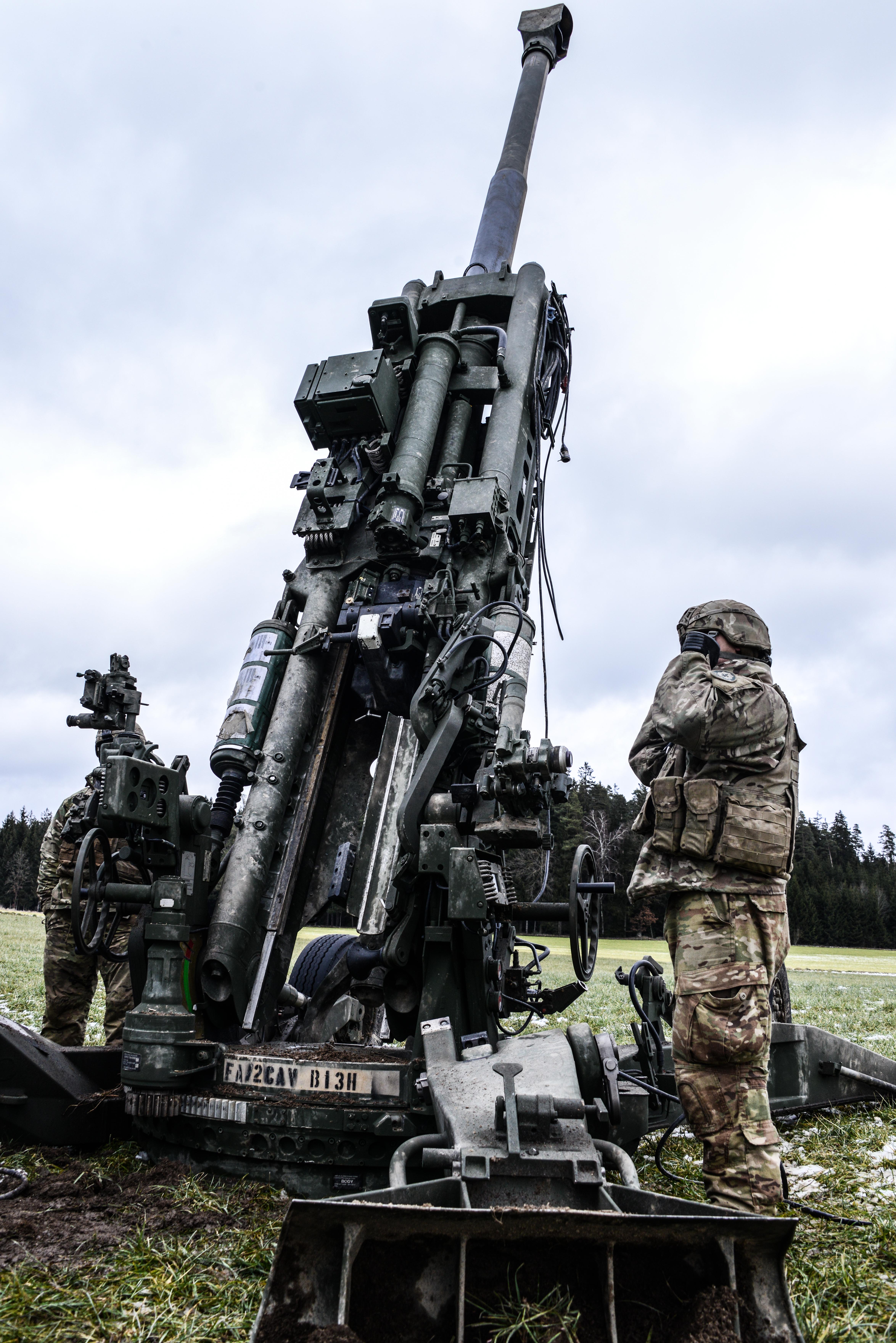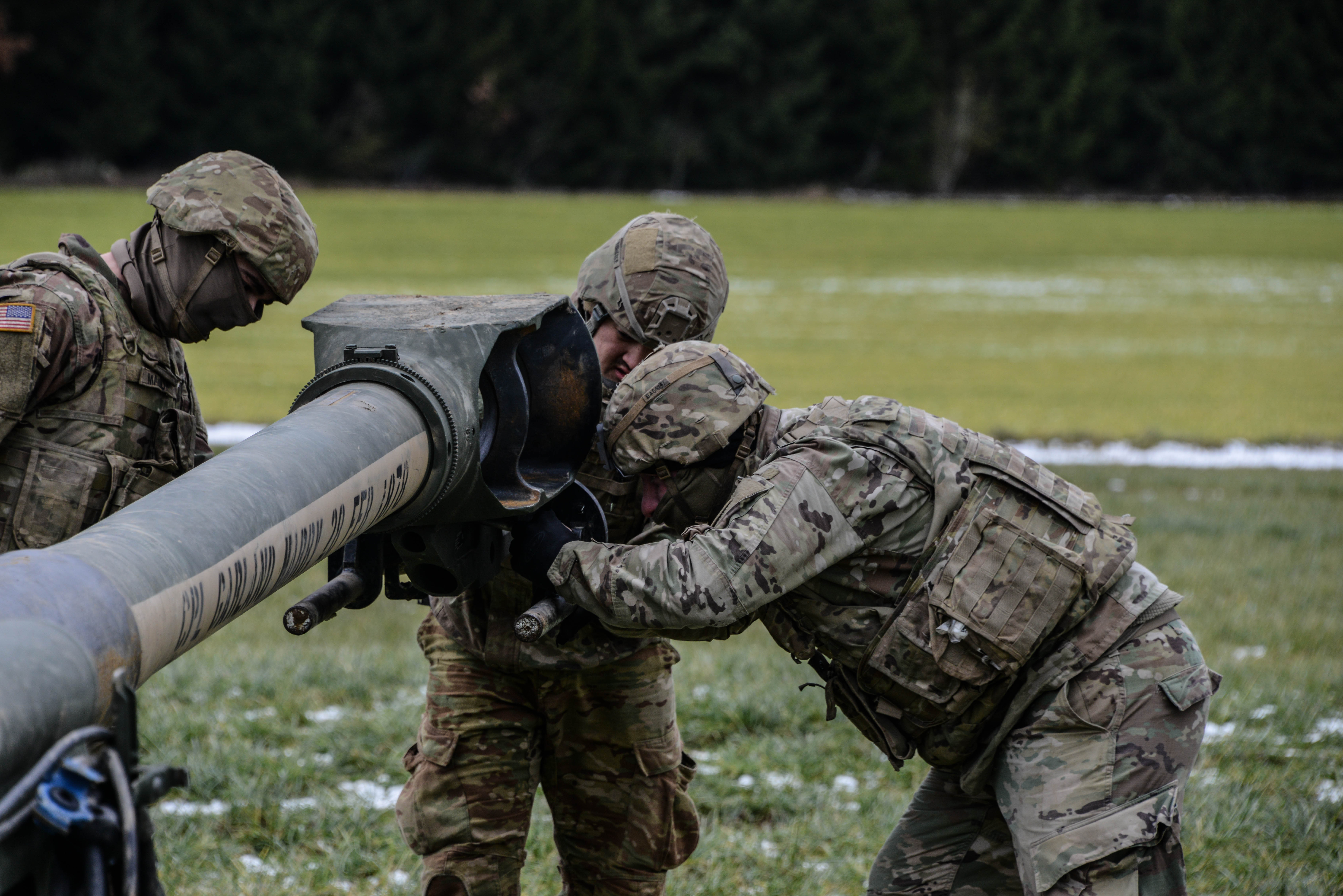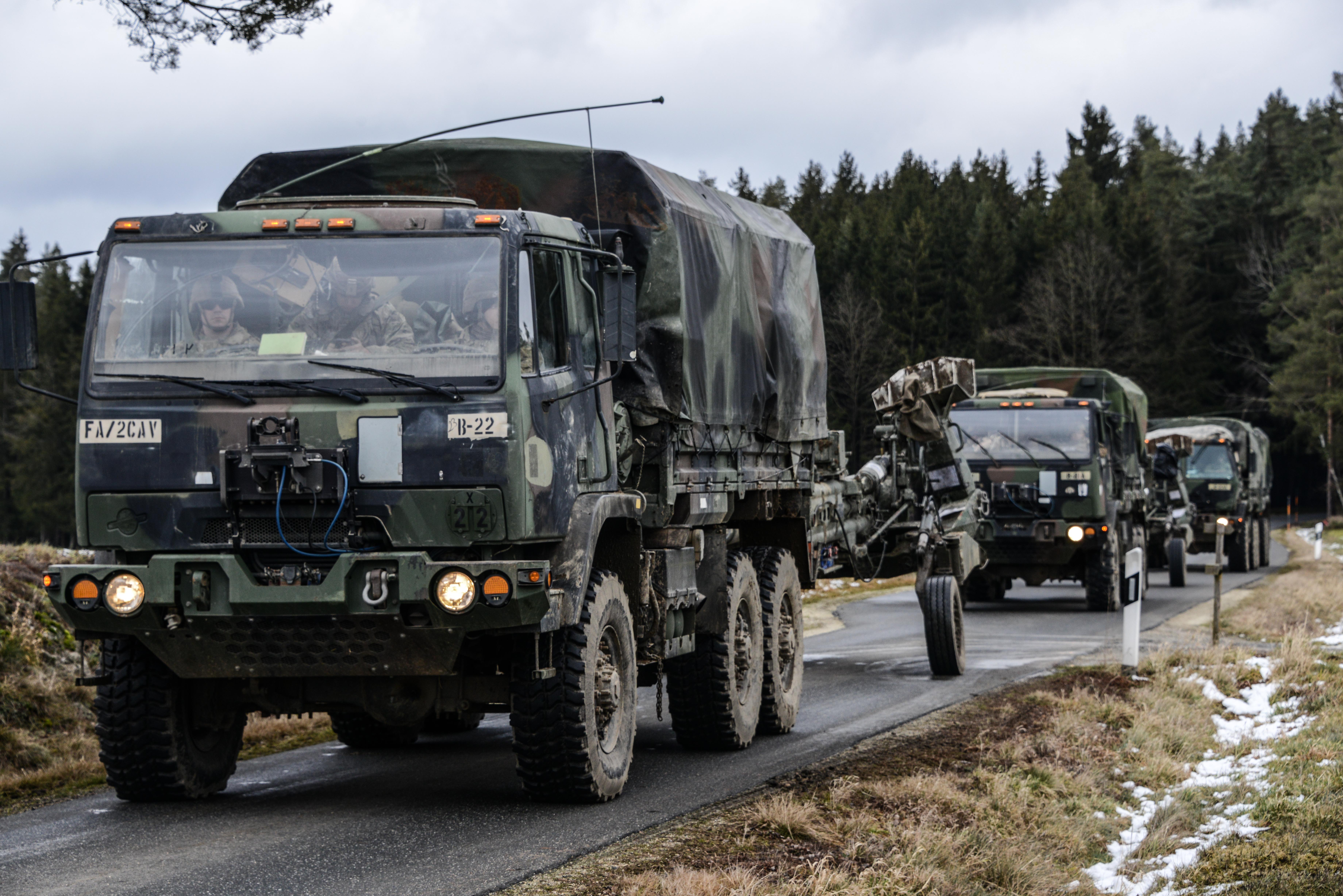The Case for a Medium Towed Artillery Army Training Publication
The Case for a Medium Towed Artillery Army Training Publication
Captain Shaun Callahan
1st Lieutenant Jacob Pachter

The Russo Japanese war from 1904-1905 served to change many minds however. The Russians and Japanese fought the first major conflict involving large numbers of the new quick firing guns. The Russians and Japanese began the war using principally direct fire techniques that were the standard procedures for nearly all artilleries of the world in that time. Both sides quickly learned the importance of cover as their exposed batteries were mercilessly decimated by the enemy’s artillery. By the end of the conflict both belligerents were practicing indirect fire as a matter of practical necessity.
On Gunnery, Michael D. Grice LTC (R) USMC
Lessons from Combat Training Center rotations are sending a clear message to artillery units across the Army, counterfire is our primary threat as a community. Towed artillery units struggle against this threat due to a failure to embrace extreme dispersion and the inability to fully understand and embrace the technological advantages of a howitzer that conducts technical fire direction. We believe that a medium towed artillery training publication, a proposed ATP 3-09.77 is long overdue and necessary to drive change in training and evaluation outlines. Just as the M109A6 has ATP 3-09.70, the fully digital medium-towed howitzer deserves an appropriate and specific Army Training Publication in order to fill these gaps. Through tough, realistic training against an independent OPFOR with advanced capabilities, we have identified the following as the most pressing gaps that need to be addressed and captured into the above mentioned publication as deviations from the ATP 3-09.50; defending against counter-fire, and reconnaissance, selection, and occupation of a position area, and emplacement.
Though the Army is moving towards a Mobile Howitzer, we believe the tactics, techniques, and procedures that apply to a medium towed howitzer will translate to the future Mobile Howitzer. Both the M777A2 and the Mobile Howitzer are wheel-based, fully digital systems, and we believe an ATP for the M777A2 will lay the groundwork for future ATPs as the Army fields the Mobile Howitzer.
The fully digital M777A2 employing the DFCS-R is starkly different from its predecessor, the M777. Whereas the M777 uses optical fire control instruments and orienting equipment to lay and fire, the DFCS allows the M777A2 to operate much like a M109A6 utilizing the PDFCS. A fully digital M777A2 can emplace and fire using its digital systems and the DFCS tracks and applies weapon and ammunition data as it computes technical firing solutions on the howitzer. This scale of this shift, while acknowledged by the towed community, does not appear to be acknowledged with the commensurate level of doctrinal and training updates. As acknowledged in the ATP 3-09.70 “With advent of automated PDFCS, the first priority for the fire direction center is no longer technical fire direction, but instead database management.” What’s missing from this mention of a change in the fire direction center’s number one priority is that the onus on meeting the 5RAPFs now shifts to the individual howitzer section chief.
As seen in Ukraine during the past six years, the effects of massed indirect fire is the deadliest threat artillery batteries face against a near-peer enemy. Proven through multiple CTC rotations, maximizing howitzer dispersion is the most effective way to mitigate this threat. Traditionally with towed artillery, dispersion was difficult to achieve as howitzers had to be within line of sight of orienting equipment such as an aiming circle and large dispersion would negatively impact the battery’s ability to shoot a converged sheaf. Current doctrine reflects these constraints and does not take into consideration the capabilities of the M777A2.

Using its onboard encrypted GPS via the Improved Platform Integration Kit (IPIK), Inertial Navigation Unit, and Vehicle Motion Sensor, the M777A2 is a self-laying and self-locating piece. It does not require orienting equipment or survey in order to lay and therefore no longer needs to be within line of sight of an aiming circle. Furthermore, in instances of navigation system failures, individual howitzers can conduct reciprocal lay off of a digital howitzer or have an aiming circle pushed to their location. These capabilities allow howitzers to achieve far greater dispersion than was previously possible. Despite these advances, ATP 3-09.50 does not adequately lay out dispersion guidelines where counter-fire is the primary threat.
Additionally in ATP 3-09.50 and TC 3-09.81, the method of achieving a converged sheaf from a dispersed gunline is to calculate and apply Terrain Gun Position Constants. Current doctrine states,
Terrain gun position corrections will provide an acceptable effect on the target provided the firing unit’s position is within a box 400 meters wide and 200 meters deep. This box is centered over the firing unit center and oriented perpendicular to the azimuth of lay. If the firing unit is spread out more than 400 meters by 200 meters, degradation in effectiveness of sheafs can be expected as fires are shifted throughout the sector for which they were computed.[1]
According to current doctrine, a 400 x 200 meter box is the recommended area for a firing unit that wishes to fire a converged sheaf with TGPCs. This area is far from ideal for a howitzer platoon let alone a battery. This degree of dispersion will only offer minimal protection from counter-fire from a near-pear threat who has the capability to mass rocket and cannon fire on an area target. Furthermore, the use of TGPCs is wholly unnecessary for the M777A2 as these howitzers are self-locating and calculate their own firing data for their specific position. This means that the limiting factors for dispersion in a firing unit are communication ranges and METT-TC considerations. With the fully digital M777A2 howitzer, as long each piece can range the target, dispersion does not affect a firing unit’s ability to fire a converged sheaf as each individual gun is computing its own data to the target.

This is not to say that fire direction centers and howitzer sections should not continue to train on laying by circle and the manual computation of TGPCs. However, there is no current doctrinal backing for employing extreme dispersion and taking full advantage of the digital capabilities of the M777A2 howitzer. The M777A2’s DFCS-R’s ability to self-locate, lay, and compute firing data gives battery commanders tactical flexibility in determining how to array their batteries and provides an increased menu of options to employ extreme dispersion when the situation dictates. Given the current threat artillery batteries face, units should strive to employ maximum dispersion in order to remain survivable.
Current cannon artillery doctrine is also outdated with regard to the occupation of a position area. ATP 3-09.50 outlines the procedures for RSOP, placing great emphasis on establishing survey, setting up orienting equipment (aiming circles), determining initial deflections, and managing howitzer representatives on the advance party in preparation for main body occupation. The M777A2 howitzer has onboard encrypted GPS, an inertial navigation unit, and vehicle motion sensor that all work together to track and determine the howitzers position. Furthermore the M777A2 is a self-laying piece that can determine the grid-azimuth of the cannon tube. Given these capabilities, survey and setting up orienting equipment is unnecessary as the M777A2 has both positional and directional control, allowing it to lay on azimuth and report accurate gun position without the use of survey and aiming circles. For these reasons, the use of howitzer representatives on advance party who report initial deflections is unnecessary as the howitzer section is able to lay without using optical fire control equipment sighting in on a lay circle.
In order to effectively conduct a digital occupation, the fire direction center must send the howitzers a digital move order to the center of battery position. This move order should include a position area radius that is large enough to cover the firing area. This digital move offers the battery flexibility in where each howitzer emplaces and the digital capabilities of the M777A2 allow each howitzer to lay and determine current position regardless of where they emplace in the position area. This approach drastically increases the speed a battery is able to be in position ready to fire, increases the ability to disperse (sections do not need to be in visual or audio range of an aiming circle), and reduces the potential for human error associated with degraded laying techniques. Given the capabilities of the M777A2 howitzer, the advance party does not require howitzer representatives and gunnery sergeants should not be spending time establishing survey and setting up orienting equipment unless required. Howitzer representatives should be with their sections and gunnery sergeants should be spending their time determining if a subsequent position area is suitable for the battery.
An Army Training Publication that is better suited to the M777A2 would read similarly to ATP 3-09.70. Seeing as the digital capabilities of the M777A2 and M109A6 are nearly identical, the procedures for RSOP should align more closely. This is not to say batteries should leave their aiming circles in the connex and neglect to train on non-digital methods of laying the battery. This equipment and these skills are absolutely necessary to retain and should still be emphasized in certifications and training. However, they should not be the preferred method given the capabilities of the M777A2. Establishing survey and setting up orienting equipment belongs in position improvement once the battery has established firing capability.
Our doctrine and training guidance must meet the demands of today’s current capabilities. Our Training and Evaluation Outlines (T, E &O’s) must be reflective of the platform’s primary method of movement and emplacement via the digital system. For example, Task 06-PLT-3026 Conduct a Towed Artillery Occupation, has six critical tasks that must be met for a platoon size unit to be considered “Trained”. Performance step 2 and 3 talk about gun guides or advance party men. As discussed, the M777A2 requires little in the way of orientation once on a position area. It is a critical step to have “each guide align the howitzer on the azimuth of fire and provides initial deflection to the gunner”. Performance step 4 instructs the gunnery sergeant to lay the battery. Our evaluation methods must be updated to account for technological advantage to ensure units are trained and proficient on their primary method of lay and emplacement.
The tactical considerations and repercussions of our failure as a medium towed community to embrace extreme dispersion techniques and rapid survivability moves are outside the scope of this article. What is clear from a doctrine position is that we lack any method of evaluating successful survivability moves by towed systems. Key tasks such as establishment of alternate positions, marking of routes between firing locations, criteria for execution of survivability moves all lack definition through T, E &O’s.
Given the capabilities of the M777A2, the medium towed artillery community deserves the doctrinal backing to employ these howitzers to their fullest potential. What is frustrating is there was a document produced during the initial fielding of the M777, the ST 3-09.71. This Techniques, Tactics, and Procedures manual from 2009 included many of the concepts discussed within this article relating to the digital upgrades of the M777A2. Failing to publish this update has left a generation of towed artillerymen to conduct experimental techniques that contradict published T, E & Os to have any chance to fight and win against our current array of near-peer and peer threats. Without an institutional doctrinal backing, units will continue fail to account for the M777A2’s technological advantages in home station training and evaluation. With history as our guide, failure to adapt our methods of employment to the current technological capabilities will result in loss of the first battle. We recommend the immediate production, staffing, and publishing of an ATP 3-09.77 Medium Towed Artillery Operations that guides and shapes the training and evaluation outlines necessary for recalibrating our medium towed community. While acknowledging the likely advances from towed to mobile howitzer platforms, the fundamental techniques that a wheel based artillery piece organization will need to employ should be evolved with a new fielding not invented.
1st Lieutenant Jacob Pachter is a Field Artillery Officer currently stationed in Germany. He is currently a Platoon Leader in a M777A2 Battery. Previously he served as a Battalion Assistant Fire Support Officer and a Company Fire Support Officer. While serving in Germany he has participated in multiple NATO and USAREUR training exercises as well as attending two Combat Training Center rotations at JMRC. He graduated from the Field Artillery Basic Officer Leader Course and The School of Foreign Service at Georgetown University in 2017."
Captain Shaun Callahan is a Field Artillery Officer currently in command of an M777A2 battery in the 2nd Cavalry Regiment in Germany. Previously he served as a Squadron Fire Support Officer and Regimental Fire Control Officer. While serving in Europe he has participated in multiple NATO and USAREUR training exercises in addition to three Combat Training Center rotations at JMRC. CPT Callahan is a graduate of the Maneuver Captain’s Career Course and the Field Artillery Basic Officer Leader Course.
[1] TC 3-09.81/MCWP, pg. 12-16, 01 March 2016
[1] TC 3-09.81/MCWP, pg. 12-16, 01 March 2016
